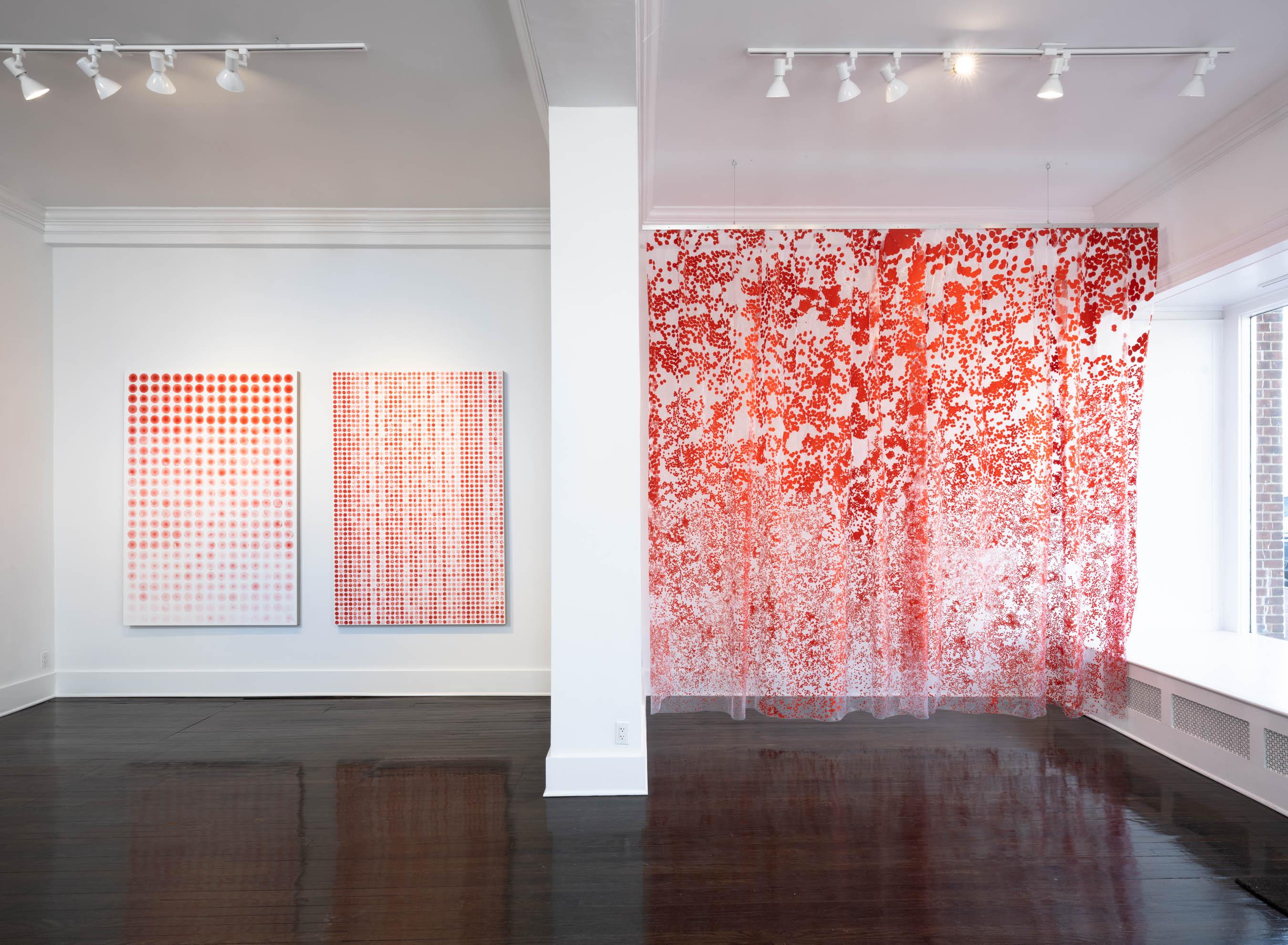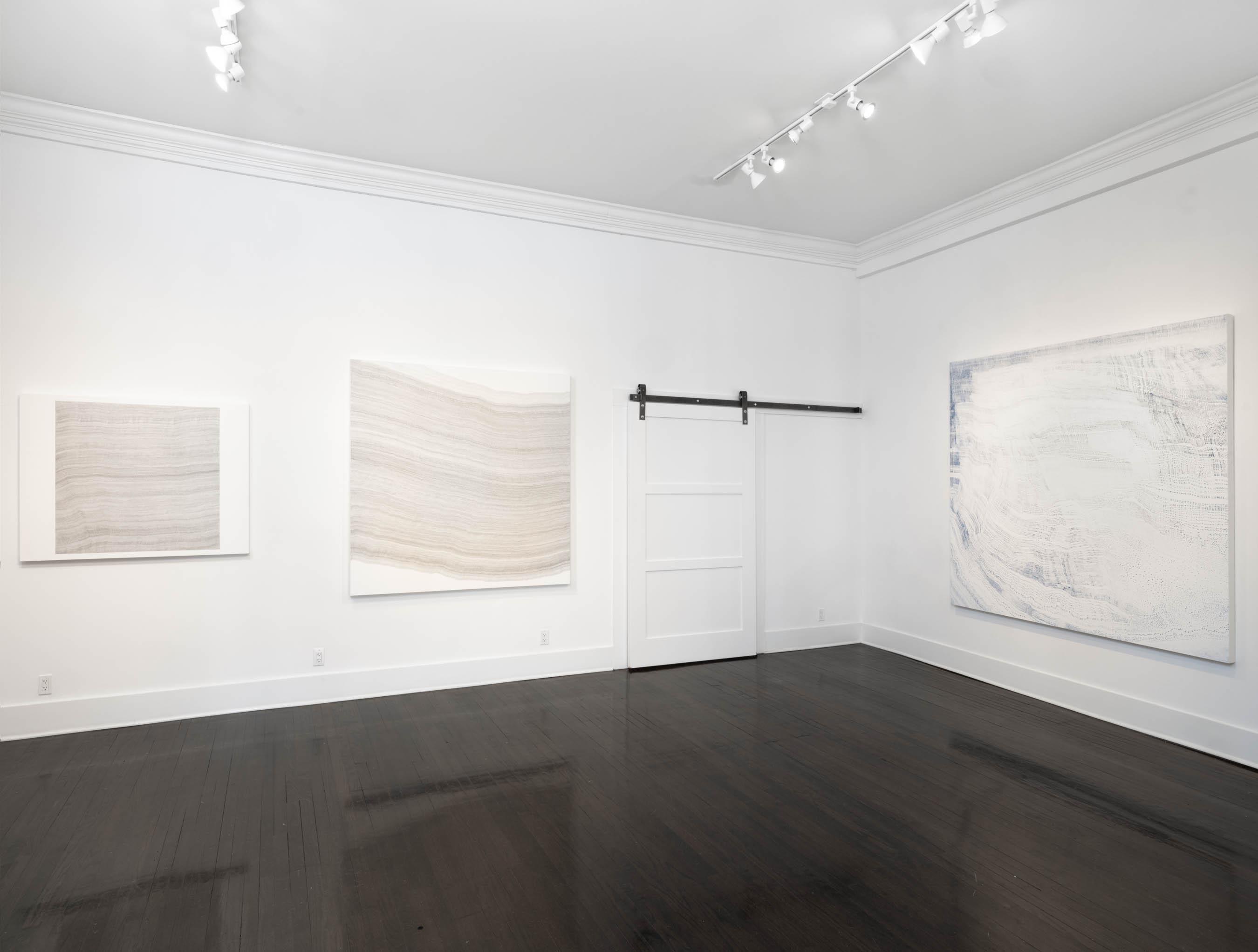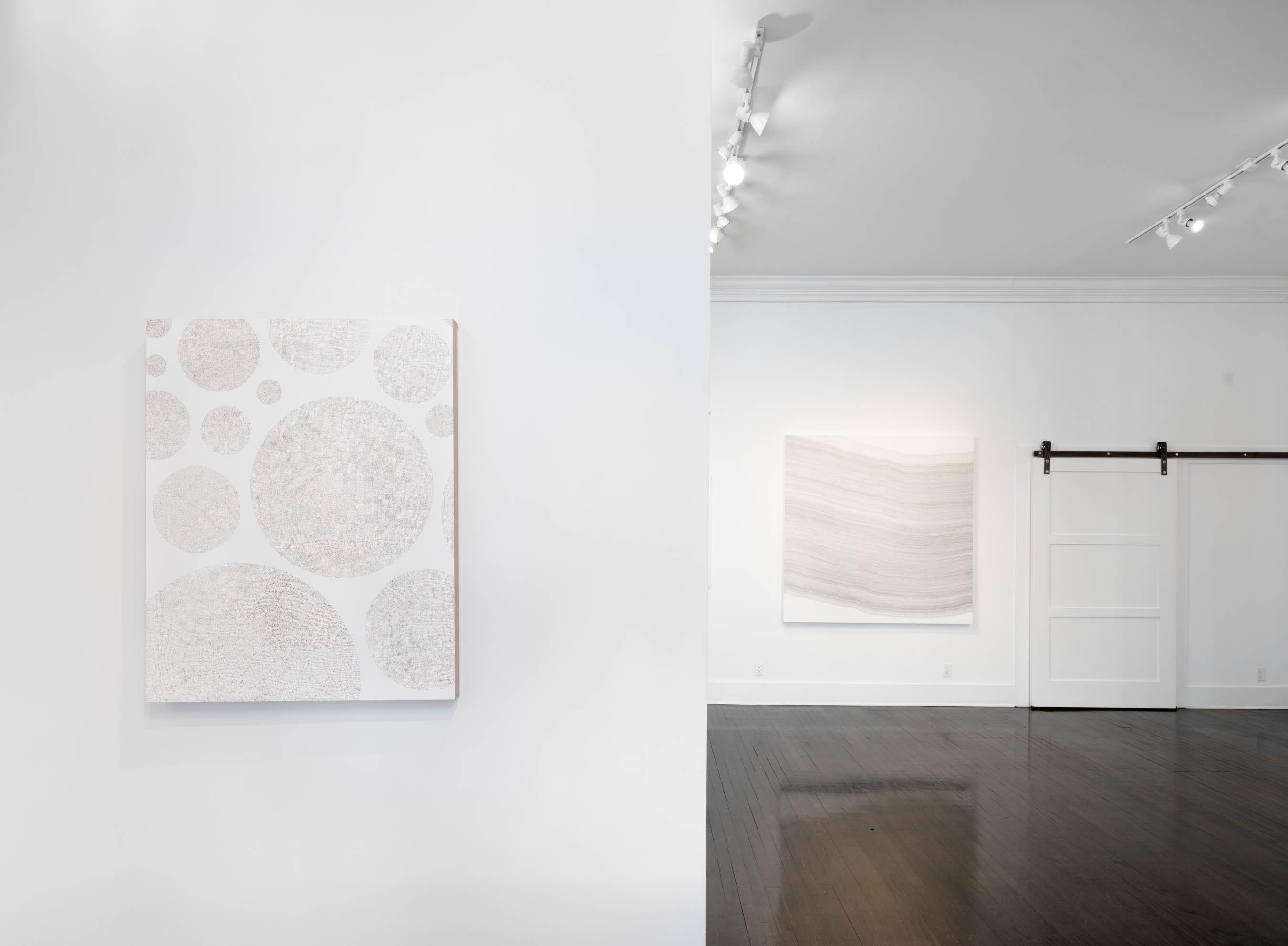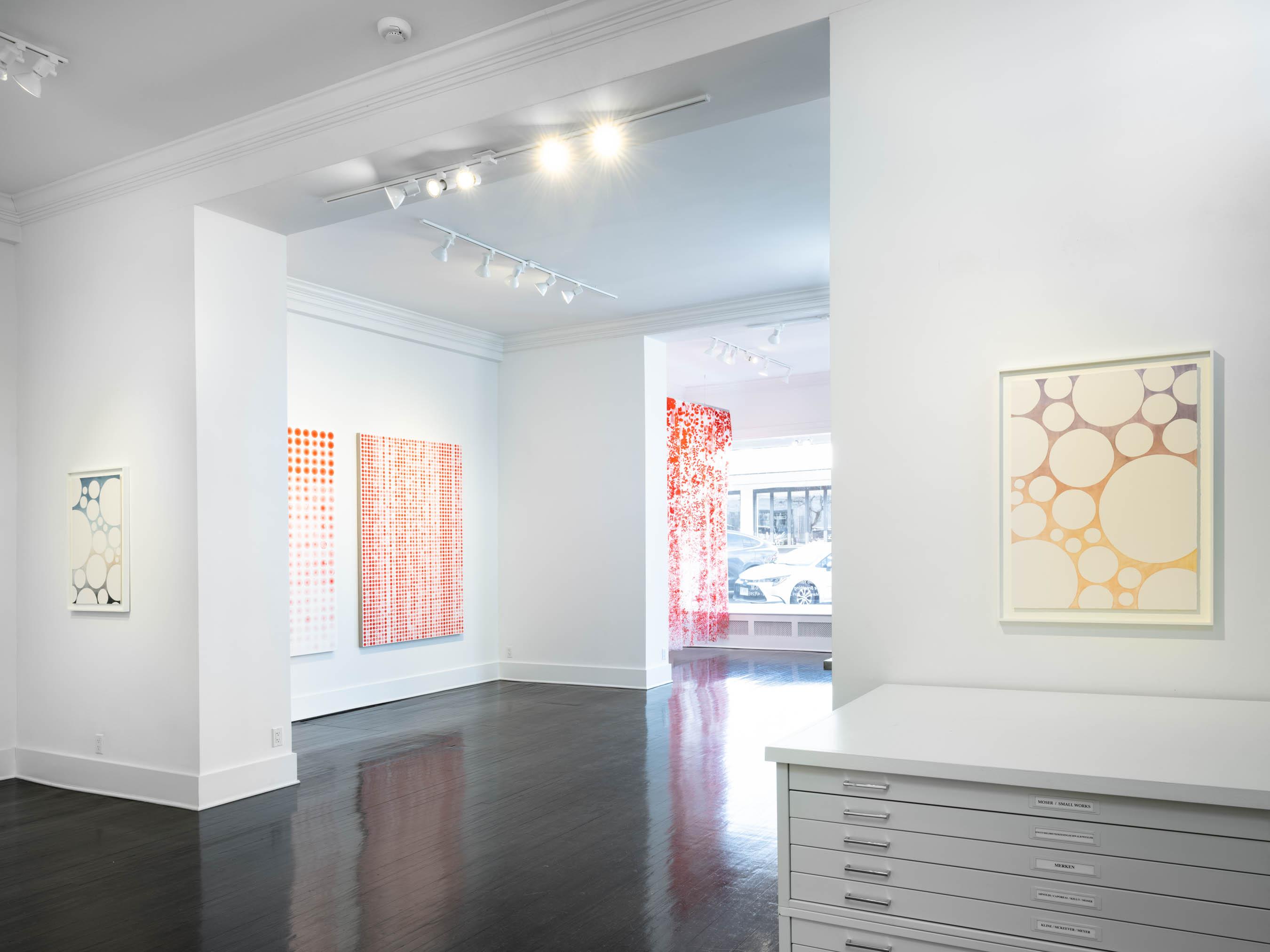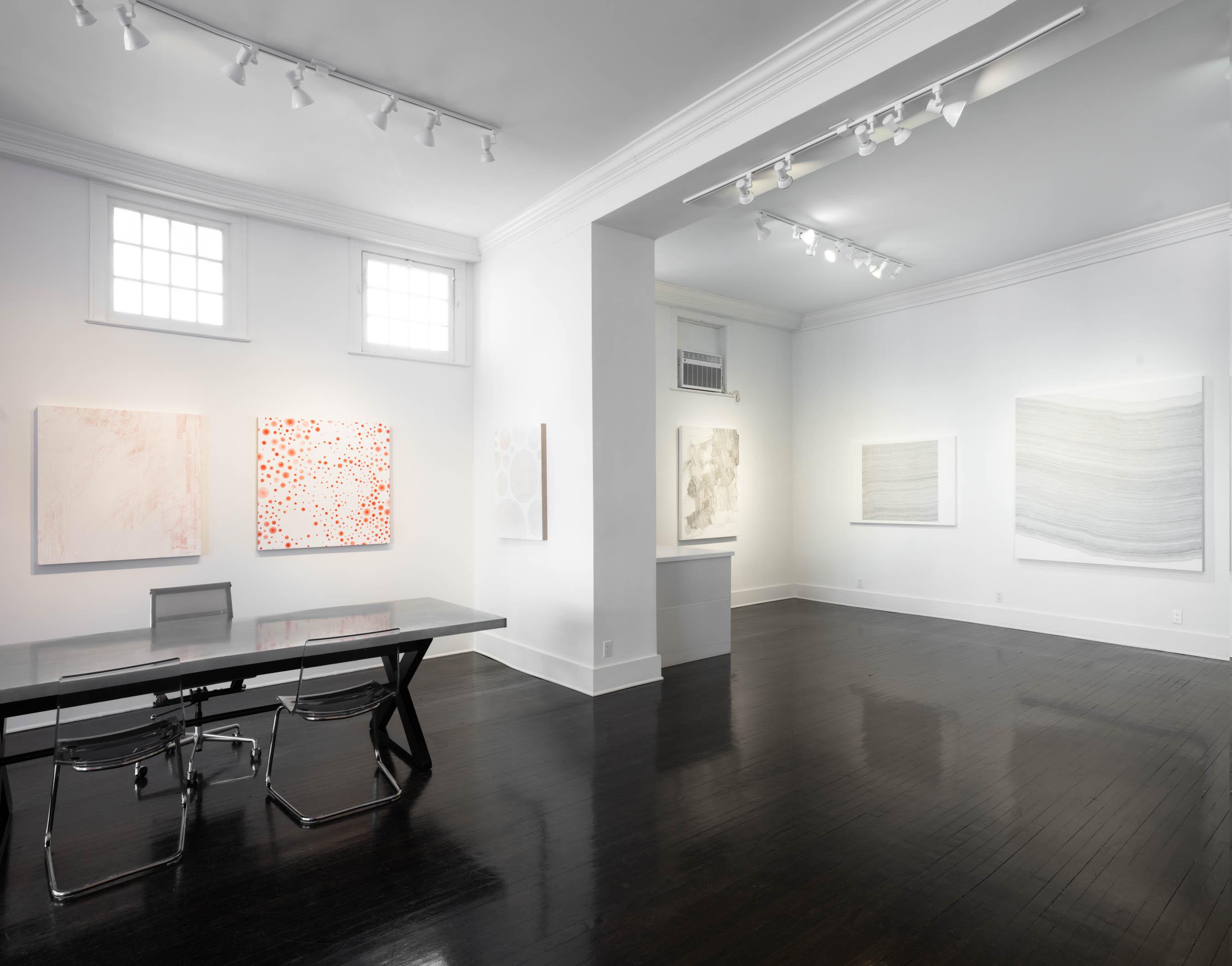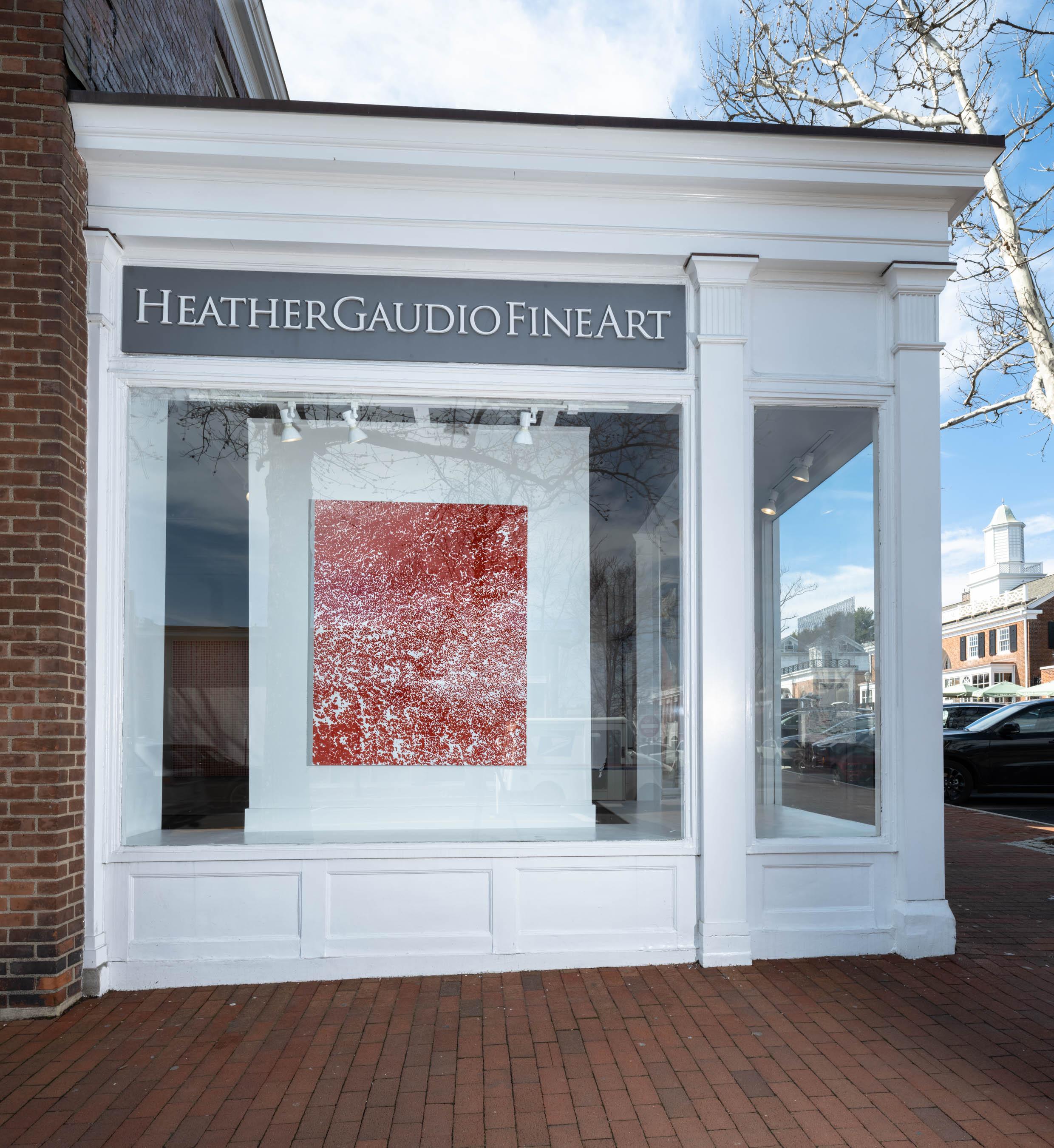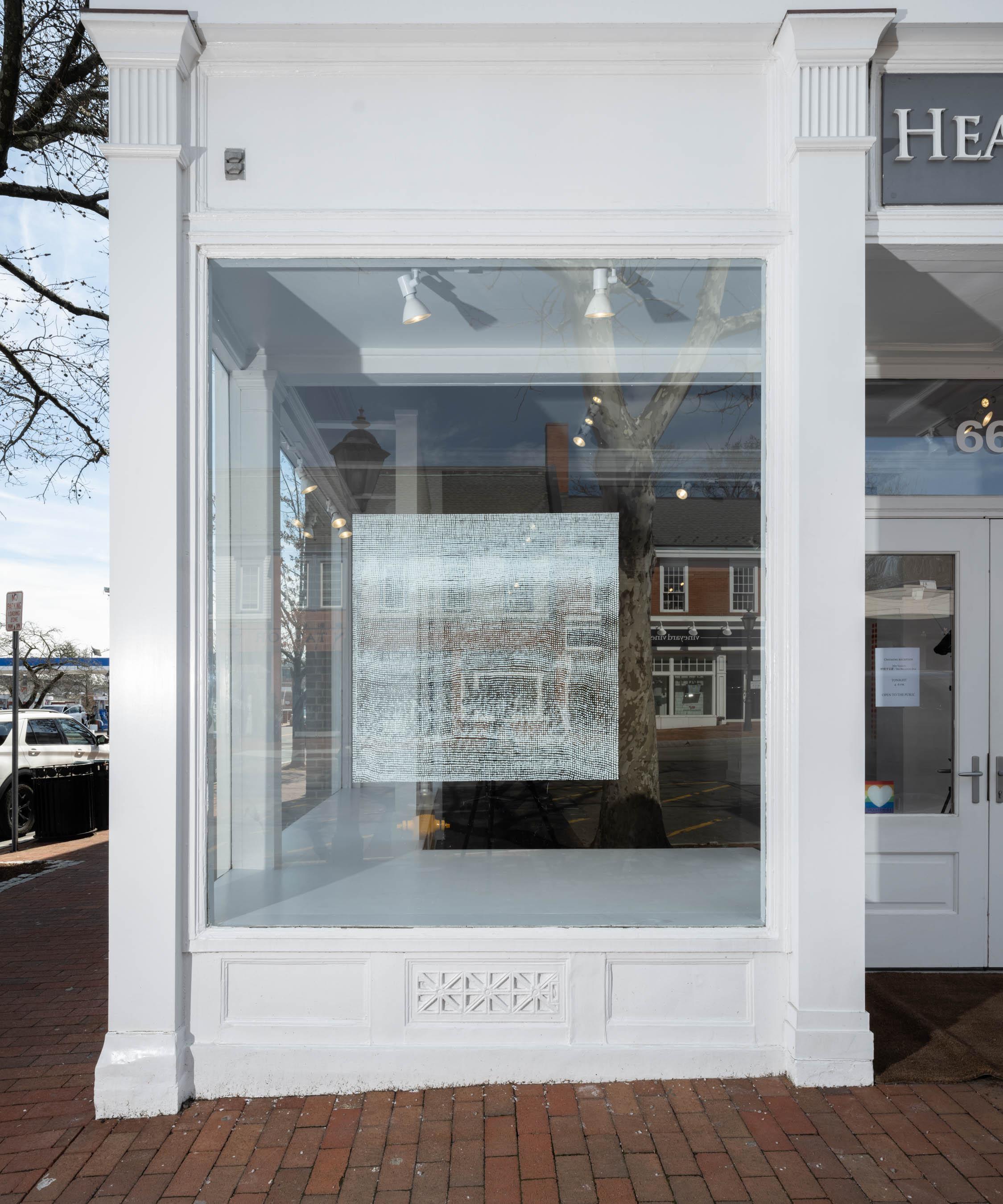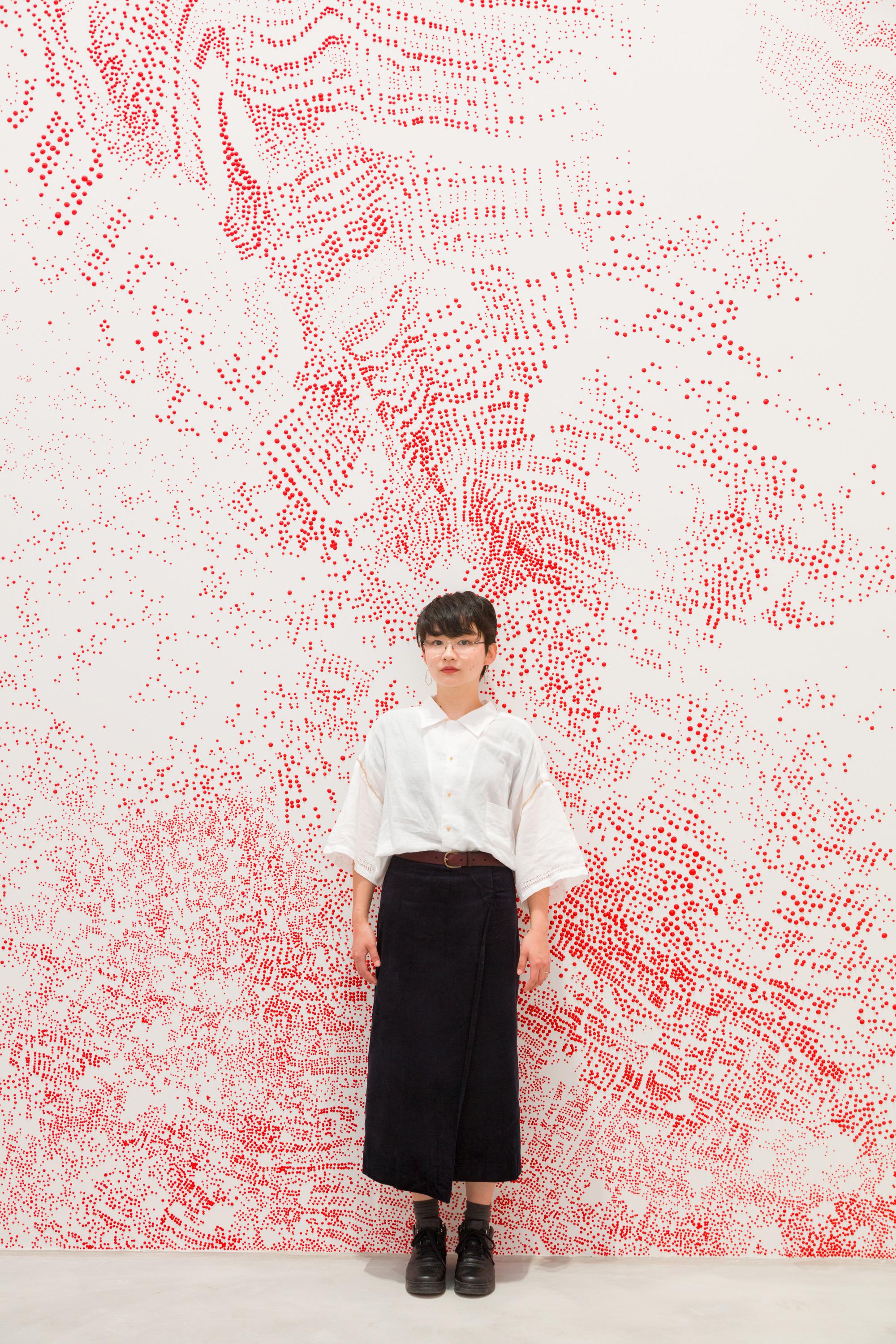MIO YAMATO
/ The Breathing Star

March 18 –
April 29, 2023
Marking the Flow of Time
It starts with the simplest of marks a tiny dot. A dot can be the start of something, such as the first notation in a drawing. It can also represent something finite, like the end of a sentence, which can lead to the beginning of another. Sequentially, three dots form an ellipsis which can signify an omission, or imply an unfinished sentence, or the continuation of a thought, an idea. A notion that exists beyond the ether. Dots scattered randomly about can conjure constellations, or microcosmic organisms, worlds that extend beyond ours. Myriads of dots arranged schematically in a continuum, invoking imagery that transcends forces and time beyond our own is a whole other matter. Such is the artwork presented by Mio Yamato, who dabs copious amounts of tiny painted dots across a surface to articulate formations seen in nature. Yamato’s expressions stem from memories, the relationship between nature and people, and the notion that ideas exist independently of the visible world.
Yamato’s abstraction depicts the structures of the cosmos and underscores our part in the universe, whether historically, physically, or metaphysically. Seeing her work through an art historical lens, the artist approaches the genre of landscape painting by using the most minimal mark the hand can make. Like Agnes Martin, who drew from the quiet poetry of the landscape as inspiration, so does Yamato look at natural visual systems, such as topographical terrains, tree bark, organisms, and configurations that represent the flow of time. While her markmaking and patterns bring to mind the work of Yayoi Kusama, the latter’s repetitive spotted motifs get mixed in with representational imagery. One of the most distinct characteristics to Yamato’s abstraction is her strict adherence to the dot. Admittedly, at times she can extend the gesture to a finely drawn line, but the dot has become her signature mark.

As a child, Yamato spent hours in her grandfather’s orchid greenhouse, observing and keeping notations and sketches of the plants as they grew and blossomed. She learned to understand how blooms thrive when weather and other factors are in balance, and how other organisms, such as moss, can symbiotically flourish in the same environment. From these experiences came the idea of the dot. Her first Red Dot, as she dubs it. With this singular mark, she developed notions behind ever-changing continuums. Yamato went on to combine these gestures with poetry and words in fact, one of her earliest installations, Metamorph, 2013, which she presented as her art school thesis project, were singular words repetitively marked on the wall. In graduate school, the artist learned spatial and other forms of design which were to inform her work going forward.
When viewing Yamato’s work, it is not difficult to conjure that first modernist visual experience created by the Impressionists, the favored short traces and dissolved brushstrokes used to represent the landscape. While Yamato’s work comes from this tradition of abstracting what the eye sees, her lineage is more closely linked to the neo-Impressionism, pointillistic marks of Georges Seurat and Paul Signac in that she too underscores the importance of line drawing. Her dots are organized and clearly marked to form a network of lines. The similarity with these two artists ends there however, for Yamato sticks to a monochromatic palette. In a sense, Yamato’s work is more akin to the abstraction of nonobjective art that was to follow in the early decades of the 20th Century, an expression in search of the unchanging world and eternal forms underlying in both nature and the human consciousness. She seeks a counterbalanced expression of human harmonies in the face of our fast-paced world, rejecting concrete forms in the pursuit of tranquility through an artistic language of abstract rhythms. For Yamato, there can be no independent existence, everything in this universe is connected. We are all stardust, sourced from other stars, supernovas that exploded into fragments that went into other stellar structures, and eventually into all living things. As “breathing stars,” we are part of the natural environment, all sourced from the same origin.

In Yamato’s works, ubiquitous dots of paint or ink are deposited ever so delicately on the surface, making for quietly expressive compositions. The dotted arrangements render movement, gradation, and sense of depths, mutating to create allusions to the natural world. At times they move across the canvas in ordered, almost military-like precision, the repetitive rows forming lines that can take a life of their own. However delicate the paint or ink application, there is a physicality to the work, particularly at grander scales. When she is immersed in the process, Yamato creates a methodology that allows the painting to “grow” on its own. “I work while observing how the work grows autonomously,” she states. Yamato will shift the course of the lines diagonally or vertically to create new undulations. Their accumulations suggest three-dimensional topographical histories, blocks of rocks, cross sections of geological strata or waterfalls that extend beyond the limitations of the picture plane. The dots themselves can vary in scale, volume, and transparency, their varied application adding complexity to the textures. In some instances, the restrained dots are so reductive they can dissolve to look like traces or miniscule ghost-like points.
Other works by the artist extend the dotted mark-making into thin, fine lines, which are also slowly applied. Serpentine in character, these too are reminiscent of mountainous geographies with three-dimensional shadows. Although these visual cues are landscape in nature, there is no horizon line, nothing that fully grounds the viewer to formulate the scale of the imagery presented. There is no traditional perspective in field painting, these landscapes can be seen aerially or from the ground. In so doing, Yamato emphasizes that everywhere in space cannot be assimilated from the single focus perspective.
The only sense of scale within the imagery of Yamato’s work is represented through the large and small formats of her panel or canvas paintings, or the eye-popping, monumental site-specific installations.

Her site-specific works reflect her desire to give shape to the power of the natural space. To formulate and simulate the perceptual level in these works, Yamato creates drawings 1/6th of the size to the original, and then makes maquettes 1/10th of the scale to the space. Yet not everything depicted in a large format implies grander structures, such as cliffs or mountain ridges. Some of her paintings take on the appearance of sediment deposits, or organisms seen under microscope glass slides, the dots so clustered together that they lose their individuality. One such work is the large site-specific installation, Under My Skin, 2020, which consists red acrylic paint applied on almost 300 sheets of glass, presented at the Kyocera Museum of Art in Kyoto. Like cells, these markings create complex networks that unfurl into larger systems that are universal.
Other site-specific works have been monumental in scale, such as Red Dot (Bio), 2020, at the Hotel Anteroom Naha in Okinawa, the plethora of dots extending on a multi-wall installation six meters high from floor to ceiling. The artist has also worked on swaths of fabric, reflecting her commitment to material experimentations which exemplify her need to keep pushing the boundaries of her creativity. On these scrims, such as in Blazing in the Sea of Love, 2021, the patterns appear to be floating in a gravity-free zone. These ocular pleasures play with our process of perception, their quasi-rhythmic, repetitive intervals speak to our primal understanding that as organisms we form part of larger systems. No matter the support, whether on a rigid wall or applied on a thin, transparent cloth, Yamato’s marks act as micro and macro beings, understated in their individuality and yet collectively becoming a sublime, awe inspiring presence. Yamato has recently enjoyed expanded international attention, (last year she was the recipient of the Woman Artist in Residency at the Fundación Casa Wabi in Oaxaca, Mexico) and for her, art transcends borders, race, and generations. It resonates with everyone from all walks of life in any timespan. For Yamato, the natural environment is a majestic universe that expands beyond our existence.

BLUE DOT 10, 2022 Oil on canvas 63 ¾ x 44 inches

BLACK LINE 53, 2023 Ink on canvas
63 ¾ x 63 ¾ x 2 inches

BLACK LINE 54, 2023 Ink on canvas
51 ¼ x 38 ¼ x 2 inches


BLACK LINE 56, 2023 Ink on canvas 38 ¼ x 51 ¼ x 2 inches



under my skin, 2022 Acrylic on canvas
64 x 51 ¼ x 2 inches


RED DOT 67, 2023
Acrylic on canvas
39 ½ x 39 ½ inches

BREATH 10, 2022
Acrylic on canvas
76 ½ x 51 ¼ inches

BREATH 11, 2022
Acrylic on canvas
76 ½ x 51 ¼ inches

BREATH 15, 2023
Acrylic on canvas
39 ½ x 39 ½ inches


SPECTRUM DOT 12, 2023
Watercolor on paper
30 x 19 inches
33 ½ x 21 inches frame


SPECTRUM DOT 13, 2023 Watercolor on paper
30 x 15 ¾ inches
33 ¾ x 20 inches frame

SPECTRUM DOT 11, 2023
Watercolor on paper
30 x 21 ¼ inches
34 x 25 inches frame

COLORS, 2023 Oil on canvas
35 ¾ x 28 ½ inches



